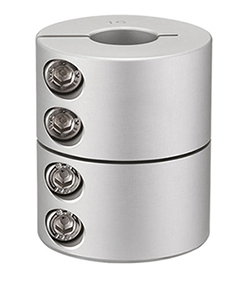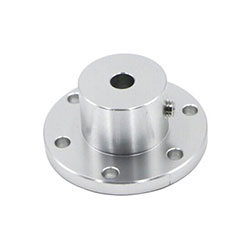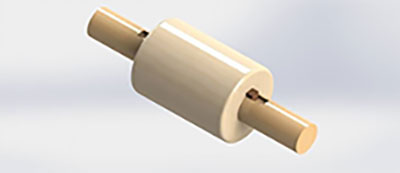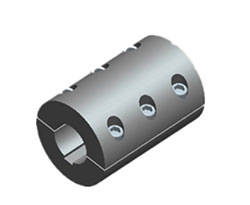What are the Types of Rigid Couplings?
Rigid couplings are an essential component in mechanical engineering, connecting two shafts to transmit power and torque while maintaining precise alignment. These couplings are designed to eliminate relative motion between shafts, ensuring efficient power transmission and reducing wear and tear on machinery. They have many advantages, including simple structure, easy assembly, convenient maintenance, low cost, high torque capacity, torsional stiffness, and zero backlashes. These couplings do not have the ability to cushion and compensate for the relative displacement of the two axes, requiring the two axes to be installed in strict alignment. But the structure is simple, low manufacturing cost, easy to install, dismantle, maintenance, can ensure that the two axes have a high degree of centering, transfer torque is larger, so widely used.
These couplings do not have the ability to cushion and compensate for the relative displacement of the two axes, requiring the two axes to be installed in strict alignment. But the structure is simple, low manufacturing cost, easy to install, dismantle, maintenance, can ensure that the two axes have a high degree of centering, transfer torque is larger, so widely used.
There are several types of rigid couplings available, each with its own unique design and applications. In this article, ATO Automation will explore some of the most common types of rigid couplings used in various industrial settings.
Flange Couplings
A flange coupling consists of two concave and convex disks called half-couplings. One half-coupling has a groove on the end face and the other half-coupling has a convex shoulder, which are embedded and centered, and the two half-couplings are bolted together. The half-couplings are circumferentially fixed to the shaft by means of keys, axially fixed by means of setscrews, and axially fixed by means of a shaft-end pressure plate and can withstand axial loads.
and the two half-couplings are bolted together. The half-couplings are circumferentially fixed to the shaft by means of keys, axially fixed by means of setscrews, and axially fixed by means of a shaft-end pressure plate and can withstand axial loads.
This pro-axial device is used to connect the two ends of a strictly coaxial line, allowing rotation in any direction, simple structure, easy to manufacture, but no vibration damping, can not eliminate the adverse consequences caused by the two shafts are not centered. It is generally used for shafts with small vibration or large stiffness and shafts with relatively smooth loads.
Flanges have several advantages over couplings:
- Simple structure
- Easy to use
- Higher transmitted torque
- Stability and reliability
Sleeve Couplings
A sleeve coupling is a common type of rigid coupling used to connect two rotating shafts to transfer torque and rotary motion. Its primary purpose is to transfer rotary motion from one shaft to the other and is commonly used in engineering and industrial applications.
The basic structure of a sleeve coupling consists of two sleeves, each of which is fixed to the ends of the two shafts to be connected. There is no direct mechanical connection between the two sleeves; instead, they are joined together by friction. This frictional connection permits a certain degree of axial compensation and can tolerate slight deviations between the axes.
Its simple structure and small radial dimensions make it suitable for applications where the two shafts have small diameters, high concentricity and smooth operation. Sleeve couplings are widely used in the field of machine tools, but their disadvantage is that the loading and unloading process is not very convenient, so they are mainly used in the field of machine tools and instruments.
Sleeve have several advantages over couplings: 
- Simple and compact construction
- Safe to use as it has no protruding parts
- Easy to install and maintain
Clamp Couplings
Clamp coupling consist of two axial portions of the clamping shell, the two clamping shells by virtue of tightening the bolt when the clamping force tightly pressed on the surface of the two shafts being linked to achieve the link between the two shafts, and through the two half of the coupling and the friction between the surface of the shafts to transfer the torque, the couplings are usually also used to make the auxiliary link of the flat key. For balance purposes, the heads of adjacent bolts should be oriented in opposite directions.
Clamp couplings are characterized by simple construction, easy disassembly and assembly, small radial dimensions, and no axial movement during installation. The disadvantage is that the two axes axis alignment accuracy is low, the structure and shape is more complex, manufacturing and balance is low, only for medium and low speed and load smooth situations.
Clamp have several advantages over couplings:
- No need to move along the axis - can be easily mounted and dismounted
- Good wear resistance - long term use in harsh environments
- High safety - reduces mechanical failures and safety accidents

